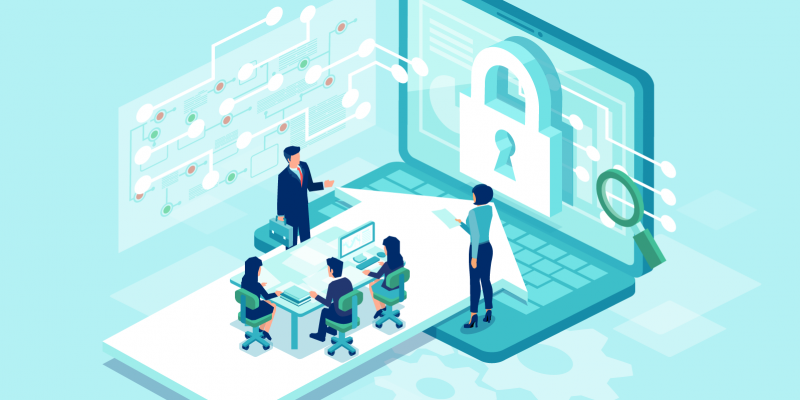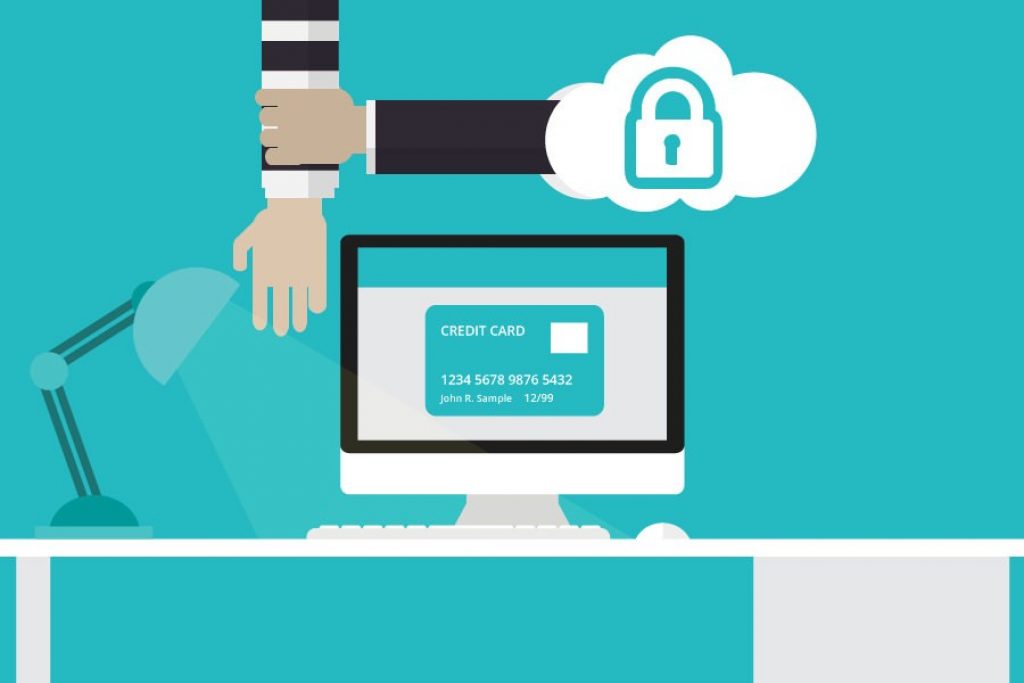
Cybersecurity for businesses? Okay, let’s start from the very beginning!
Most of the business operations perform in electronic format. A great number of them are even automatized now. It’s hard to imagine a modern business without special devices, monitoring, and audit software, dashboards, various electronic forms, etc. With the help of these tools, it has become easier to build up companies even worldwide. It’s possible to collaborate with your team without the need to be in the same room or office.
So, it’s not a secret that nowadays it’s impossible to develop a business when you don’t elaborate on its online presence and choose the proper technical equipment and software to maintain your business operations. But, on the other side cybersecurity landscape is changing as fast as the technical progress is increasing. Cyber villains become more skilled and as a result, cyber threats are more sophisticated. Thus, the necessity of a strong cyber defense grows in a geometrical progression. Anyway, it’s time to proceed to the topic of cybersecurity for businesses. 🙂
What is Cybersecurity for Businesses?
Enterprises of small and medium sizes (often called SMEs) appear to be an enabling environment for new cybersecurity technologies and solutions. It happens because of the Coronavirus pandemic impact in the recent past. SMEs have suffered more than other enterprises because they have had to start work in fully remote mode rapidly. They haven’t prepared appropriately for that, so it has become an attractive environment for cybercriminals.
However, before we start the discussion on the topic of cybersecurity for enterprises, we need to learn what is cybersecurity in general. When certain technologies, processes, and means of control are applied to protect systems, networks, programs, and data from cyber threats, it is called cybersecurity.

Major Threats to Businesses Cybersecurity Are:
- Malware (or malicious software) is a type of cyber threat, that is created with the intention to harm computers, networks, servers, or clients.
- A virus is a mischievous program, which aims to apply to all connected computers and devices. By these means, viruses “reveal the entrance” to attacked computers and devices for cyber villains.
- Ransomware is a kind of malicious software, which affects and limits access to a device. The suffered part can get access only after redemption payment.
- Phishing is a kind of cyber threat, which is made by sending malicious emails. Their aim is to collect important and private information from receivers. These letters usually look like official an organization or a familiar person has sent them, but it’s not true. Cybercriminals often do this by attaching a link or a file with a harmful code. After clicking on this link your computer or device damage.
A lot of people think, that cybersecurity is about some software or platforms, that protect their corporate emails, networks, data storage, and so on from threats written above. Yeah, it is a part of the truth. But a huge role in the business cybersecurity is also playing team members. So, conducting the appropriate training and education on modern and efficient methodologies is a must for a team to be a conscious part of the cyber defense process.
How to Provide the Best Cybersecurity for Businesses?
The vulnerability of business data is higher than ever before. Cybersecurity is important not only for the effective work of your business but also for the customers’ data protection. When your business keeps up with the best IT standards, it shouldn’t remain only beyond the newest technologies. It is also vital to manage risk assessment and analysis in advance. You should have every move mapped out many steps ahead in case crucial damage occurs.

While setting up cybersecurity processes, it’s productive to use a layered security model. This model covers a broad range of aspects, ranging from the Internet to your staff members. According to the layered cyber defense approach, we can highlight the most common aspects of cybersecurity for every business to pay attention to. So, here are some steps on how to improve your business cyber defense:
Train Your Team Members and Set Up Firewalls
A big number of data breaches happen because workers allow cyber villains to get access to systems and networks. So, it’s vitally important to teach your team the best network security practices. Your team has to be a human firewall for your business. But except this, it is also necessary to set up cyber firewalls. Like an entrance door of any house, you should close the firewall to strangers. Only authorized team members should have access.
Filter Emails and Web
The filter on spam and malicious email letters should stand before your firewall. It not only saves your internet connection traffic amount. Such a filter also ensures, that email-based harmful code never reaches your corporate network. Moreover, you can configure your firewall to receive electronic letters only from familiar senders.
Also, it’s a big deal to restrict visiting malicious websites to your workers. It doesn’t apply to wasting working time or something. It’s about protecting your business network from potential cyber threats.
Monitor and Manage Network Access and Security
It’s important to detect suspicious traffic in your network. Only authorized devices must have an access to the network. You should limit access for wireless devices with resources needed for business workflow. It is also possible to maintain network monitoring to detect suspicious activity. Like physical security, it can be outsourced services.
Apply Operational System (OS) and Application Security Patches
When vulnerabilities are detected, operational systems (OS) and applications are updated with security patches. When you refuse to install these system or app updates, you risk making your business vulnerable to misuse from the hackers’ side. Even a simple opening of the DOC file, if it doesn’t keep up with standards, can jeopardize your business security.
Update Your Antivirus and Antimalware Software
New viruses and malicious software are created every day. So, it’s really important to update your antivirus and antimalware software regularly to protect your network. If a protecting software isn’t up to date, it can’t detect newish viruses and malicious software and, as a result, protect your network appropriately.
Maintain Multifunction Printer Safety
A lot of business owners even have no idea that printer is also a potential vulnerability for cyber villains. The majority of modern printers are cutting-edge devices and full-fledged computers with their own network. So, it’s necessary to make sure that all needed configuration is installed. And also you need to update all microprograms and perform fixes.
Conclusion
To sum up, cybersecurity for business is a deep topic with diverse nuances. But we hope this universal guide will help you to begin maintaining appropriate cybersecurity for your business of all sizes. But if you still have questions about cybersecurity in the business sphere, feel free to contact us.
Don’t forget to check our regular updates of articles and guides in our HIPAA Software Blog! There are a lot of interesting subjects to dwell on. 🙂







